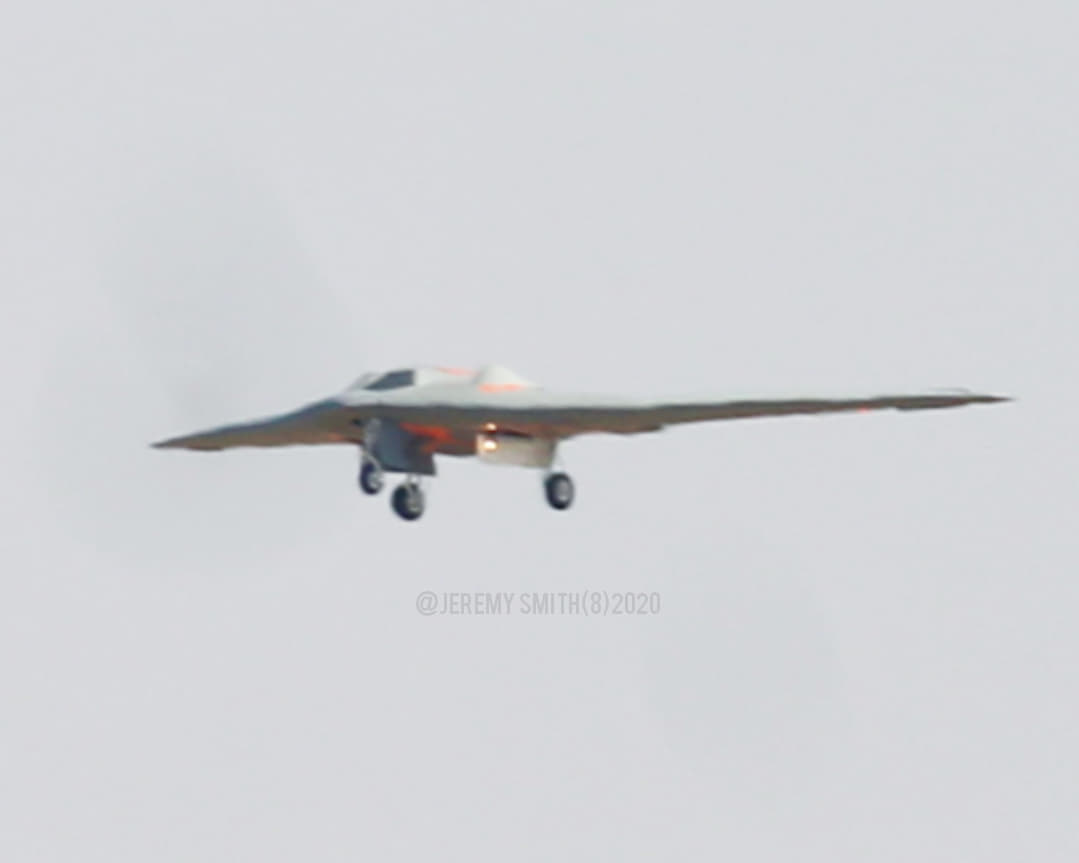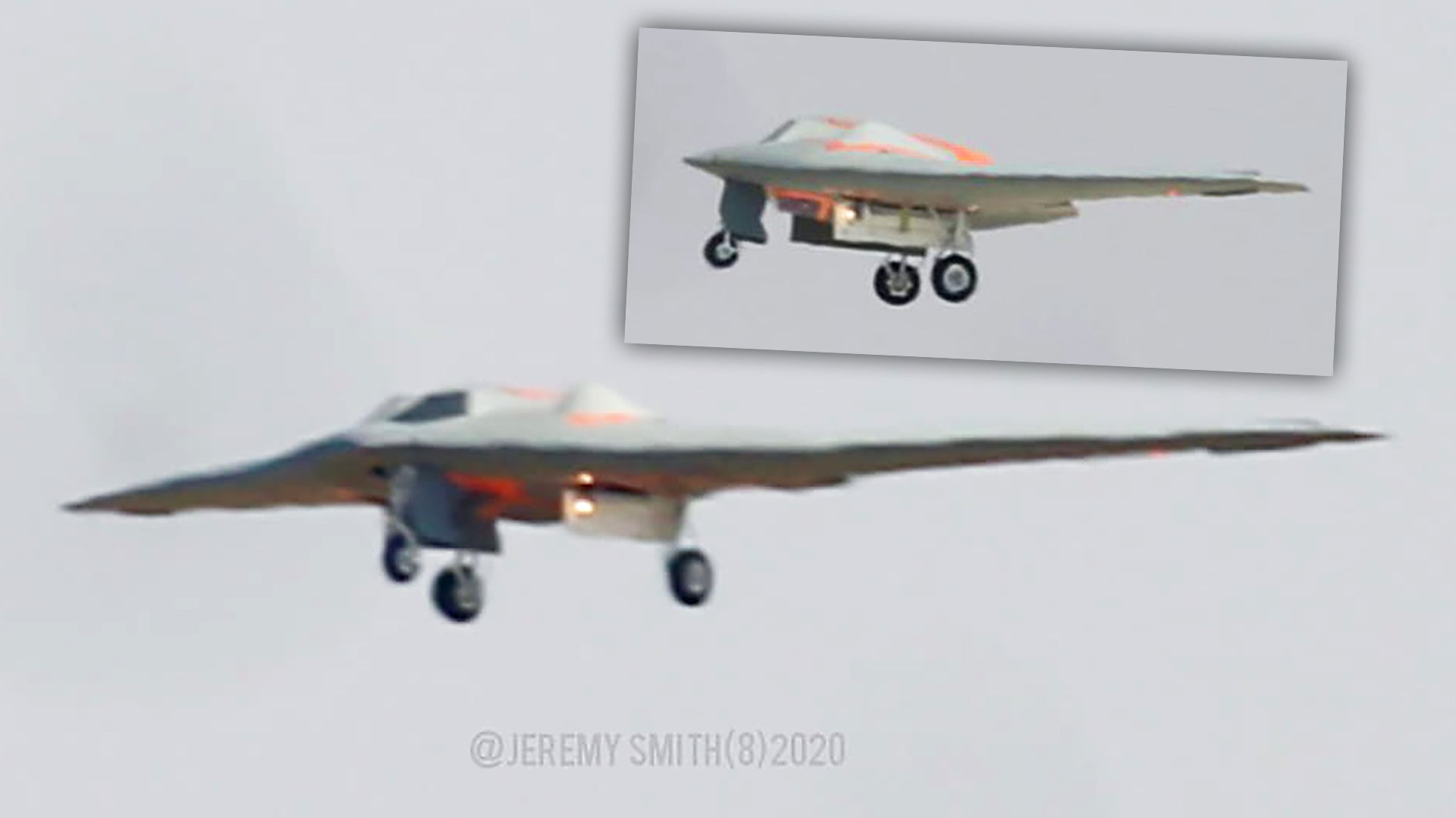In a follow-up to our July 25th report about the notoriously shy RQ-170 returning in broad daylight to its birthplace, Lockheed Martin’s Skunk Works‘ facility at the Air Force’s sprawling Plant 42 in Palmdale, California, we can report that the bat-winged spy drone has shown up there again under similar circumstances.
Aviation Photographer Jeremy Smith, who goes by the handle @KPMD_Spotter on Instagram, encountered the RQ-170 on September 3rd, 2020. He describes the rare moment as such:
At first, I noticed the chase aircraft in the pattern, mostly working on low approaches to Runway 25. So, I assumed it had ‘Johnny 5’ with him. I drove over there and it said on my scanner he needed to pick up a playmate ‘Johnny 05.’ Then he headed northeast to pick him up and he got the ILS for Runway 22 and landed.”


The RQ-170 used the same ‘Johnny’ callsign the last time it landed at Plant 42, as well as the same chase plane, a 1981 Beech 55 with the registration N254BC. The aircraft is registered to MH Aviation, located at nearby Fox Field. According to flight-tracking data, the aircraft regularly flies support missions into the Edwards AFB and NAWS China Lake range complexes, as well as to other interesting locales like Beale AFB and Fort Worth, Texas.

The Sentinel had a light gray/cream overall color along with dayglow highlights near where some of its major features exist, such as its SATCOM ‘humps,’ its dorsal area, and around its ventral sensor area, which traditionally holds an electro-optical and infrared camera turret under a faceted window enclosure and a conformal AESA radar behind it. These types of very high visibility modifications to the aircraft exterior are intrinsic of test and development work being done, but the first clear image ever of the RQ-170, which was snapped at Afghanistan’s Kandahar Airfield in 2008, showed a similar arrangement, too.

As to what the aircraft may be up to, we can’t say. There has been an explosion in flight testing over the Mojave in recent months, much of it has to do with low-observable (stealth) technologies and sensors. We also know of major integrated combat testing between various Air Force stealth assets, including the RQ-170, which has occurred recently.
At the same time, the Sentinel is by no means a young aircraft or capability set. Lockheed Martin is now pitching, at least conceptually, an outgrowth of the RQ-170 design to the U.S. Air Force, which is suddenly highly interested in unmanned combat air vehicles (UCAVs) once again. You can read about the Air Force’s bizarre and frankly troubling saga with UCAVs in this past feature of ours.
The closest thing the Air Force has to such a capability, at least that is officially disclosed, is the RQ-170. So, it wouldn’t be surprising at all if it was being used for risk reduction efforts. Beyond that, the RQ-170 itself continues to evolve. We have seen and heard about it in multiple coatings configurations alone, and that doesn’t include potential changes to its mission systems over time. So, Sentinel flight testing has continued, just like any other combat aircraft. Doing it during the day, and especially landing it directly at its birthplace at Plant 42, is a whole lot more efficient than doing it from a highly remote locale and even at night.
Regardless, the second appearance of an RQ-170 flying directly out of Plant 42 in just two months is another sign that the Sentinel transition from out of the shadows seems to be accelerating.
Author’s Note: A big thanks to Jeremy Smith for sharing his photos with us. Make sure to follow him over on Instagram. Also, a big thanks to ADSBExchange.com which continues to be an invaluable tool for what we do.
Contact the author: Tyler@thedrive.com
